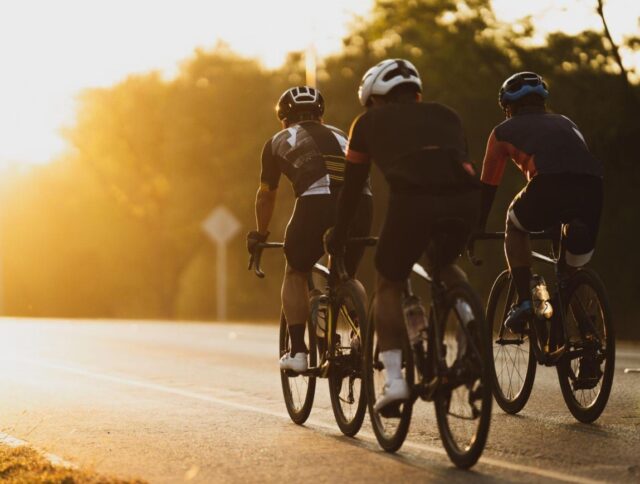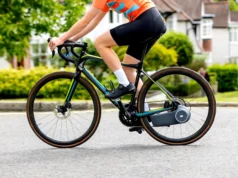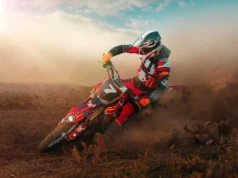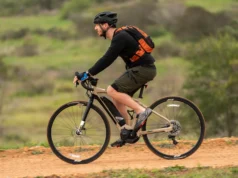According to the League of American Bicyclists, there are over a thousand state and local advocacy groups and bikes clubs across the U.S. Getting a group of biking enthusiasts together is the best way to ride — from short trips to multi-day excursions. Signing up can help you find a community, learn about your favorite sport and improve your cycling skills. Here’s everything you need to know about group bike riding.
Key Points
- Group cycling improves visibility, skill development, and motivation.
- No-drop and drop groups cater to different riding paces and goals.
- Communication and formation discipline are essential for safe group riding.
- Gear, rules, and etiquette matter as much as endurance.
- Smaller groups improve cohesion and safety in narrow or winding roads.
- Shared responsibilities help everyone contribute to the group’s efficiency.
Benefits of Group Biking
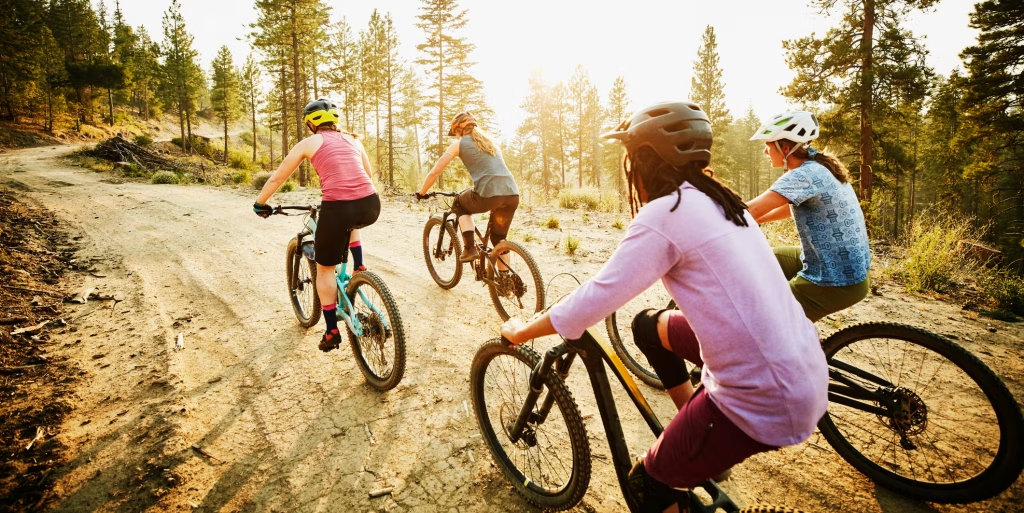
Joining a cycling club can be whatever you make it. It’s a surefire way to find other bicycle lovers open to connecting. You can make lifelong friends who share your interests and love of the outdoors.
Having more than one bike on the road increases your chances of being seen by passing drivers. Contact another member in your area if you need someone to ride with.
New to biking? You can pair with more experienced riders who can evaluate your skills and give you tips in real-time. Use the Cardo Packtalk Outdoor to talk hands-free with your fellow riders without looking away from the road. The device mounts seamlessly to your helmet for a smooth, connected ride when you’re still finding your way.
Becoming a member can also motivate you to rack up the miles as you build endurance, lose weight or get back in shape. Disappointing your new friends makes backing out of a race or group ride much harder.
Types of Cycling Groups
There’s a group for all types of riders — from friendly, inclusive neighborhood meetups to serious cyclists looking to push themselves to the max.
- No-drop groups prevent anyone from getting left behind. They will slow down if someone is having trouble keeping pace.
- Drop groups maintain a strict pace in pursuit of a goal or time. It’s everyone’s responsibility to keep up and find their way to the starting or end point.
Each type typically has a leader, or puller, who breaks the wind, sets the pace and directs the group from the front. The rest will ride single- or double-file, depending on the lane width, in their drift to minimize wind resistance.
Most groups cycle leaders in and out to spread the responsibility. The leader should alert the others to potential hazards, upcoming turns and changes in the terrain.
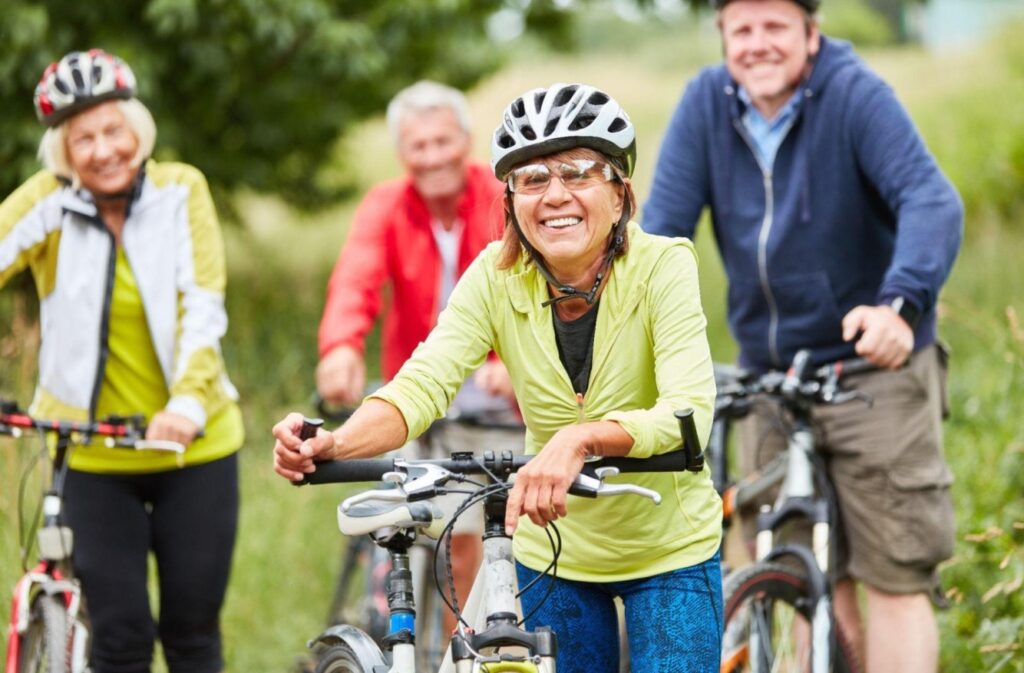
How to Cycle in a Group
Every group has its own rules and regulations. The coordinator usually hosts a website or social media page with information on how to participate, including the available times/slots, required gear and terms of conduct. Connect with the group to ask questions about the ride and what you should bring.
Essential Equipment Prep Tips
Regardless of your chosen group, you’ll need a reliable, well-maintained bicycle that fits your unique measurements. Test the brakes, gears, lights and pedals to ensure they’re up to standard. You must wear the required safety gear to avoid injury and endangering the other riders. Wear biking clothes, comfortable shoes or those that clip into the pedals, a half-face helmet and pads in case of a fall. Try on the ensemble to see if everything fits without limiting your range of movement. You can always borrow equipment from another member of the group.
Wear wireless communication devices to keep up to 15 riders connected. The headsets link directly to one another up to a .06 miles between each rider and won’t disconnect when you change position. They resync automatically when in range, so you can rejoin the conversation once you catch up.
Road Etiquette in Groups
You must follow the rules of the road by riding in the designated bike lane if one is available. Groups can take up the whole lane if there’s enough room for a vehicle to pass, but stay inside the lines, keep a steady pace and avoid swerving to keep the traffic flowing. If the road is too narrow or passing isn’t allowed, ride single-file near the shoulder.
Ride Positioning by Group Size
| Group Size | Road Type | Recommended Formation |
| 6–8 riders | Winding/tight roads | Single-file or staggered |
| Up to 12 riders | Wide, flat roads | Double-file or full lane |
| More than 12 | Break into sub-groups | 150 feet spacing required |
Stay one bicycle length away from the other riders to consolidate your group. Keep 150 feet between groups when breaking up into smaller factions.
Taking Turns: Rotating Leaders Properly
Everyone should take their turn pulling and facing the headwinds. The leader will drop back clockwise in double-file formations, with the person directly behind them taking their place. The rest of the group should rotate into the next position simultaneously so everyone has room to change positions. Swap places in flat, quiet areas where you don’t have to worry about passing vehicles.
Steps to rotate safely:
- Signal clearly before dropping back or moving forward. Eye contact helps.
- Move steadily and don’t accelerate or slow down abruptly.
- Rotate only when safe, such as on wide, flat roads free from immediate hazards.
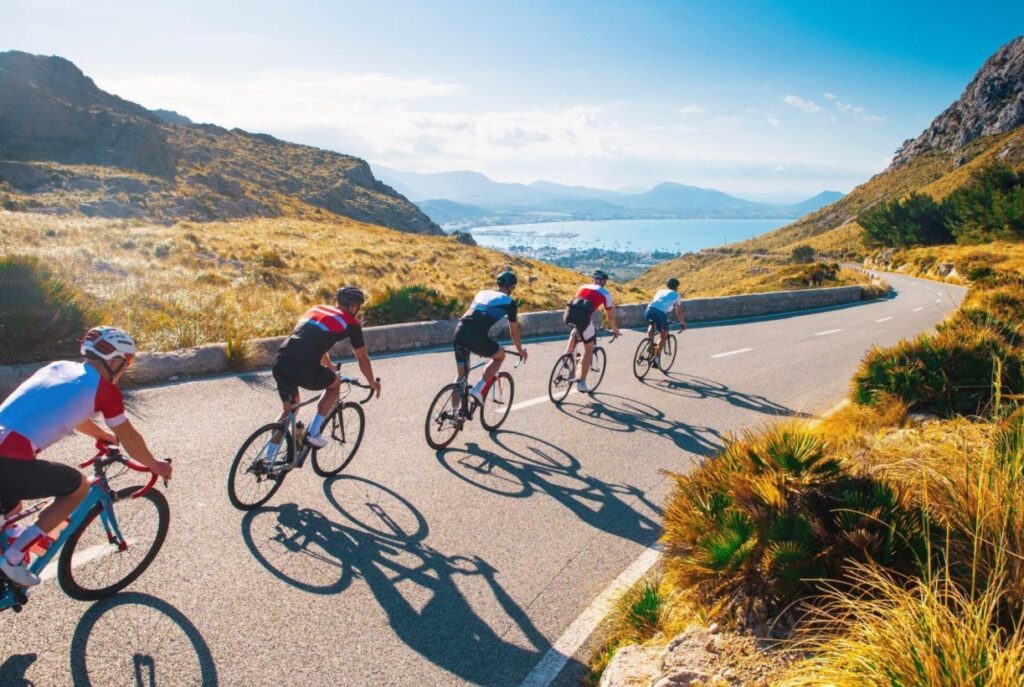
Group Ride Mistakes Beginners Should Avoid
Riding with a group is a lot of fun — it’s social, motivating, and a great way to improve. But if you’re just getting started, a few common slip-ups can throw off your experience (and annoy the group). Avoiding these early mistakes will make your rides smoother and help you blend in like a pro. Common rookie mistakes:
Starting with a group that’s too advanced
It’s tempting to jump into a fast-paced group and try to keep up, but if your endurance isn’t quite there yet, you’ll burn out quickly. Start with a beginner-friendly or “no-drop” group that won’t leave anyone behind. That way, you can focus on learning the flow instead of gasping for air.
Skipping the bike check
A wobbly wheel or squeaky brake might seem harmless at home, but in a group, it can mess with the ride and even cause accidents. Give your bike a quick once-over before heading out — check the brakes, tires, chain, and gears. It’s about keeping everyone safe, not just you.
Tuning out during the ride
Group rides rely on communication. Riders use hand signals, head nods, and short verbal cues to warn about bumps, turns, or slowing down. If you’re zoning out or distracted, you might miss an important heads-up — and that can be dangerous.
Wearing the wrong gear
Uncomfortable shoes, no gloves, or forgetting water might not sound like a big deal, but they’ll make a long ride miserable. Make sure your clothes don’t chafe, your helmet fits snug, and you’ve packed the basics (like a water bottle and a snack).
Forgetting to warn others about road hazards
If you spot something sketchy on the road — like a pothole, broken glass, or a branch — call it out or signal to the group. The people behind you can’t always see what’s coming, and a simple warning can save someone from a flat tire (or worse).
Join a Biking Group Near You Today
Cycling is more fun with other people. Groups and clubs help you master crucial skills you can’t learn alone. When you’re ready to join, review the group’s rules, obey the laws and wear the proper gear to start on the right pedal.
Group cycling can turn into one of the most fulfilling hobbies — both physically and socially if you just stay informed, prepared and open to learning.

